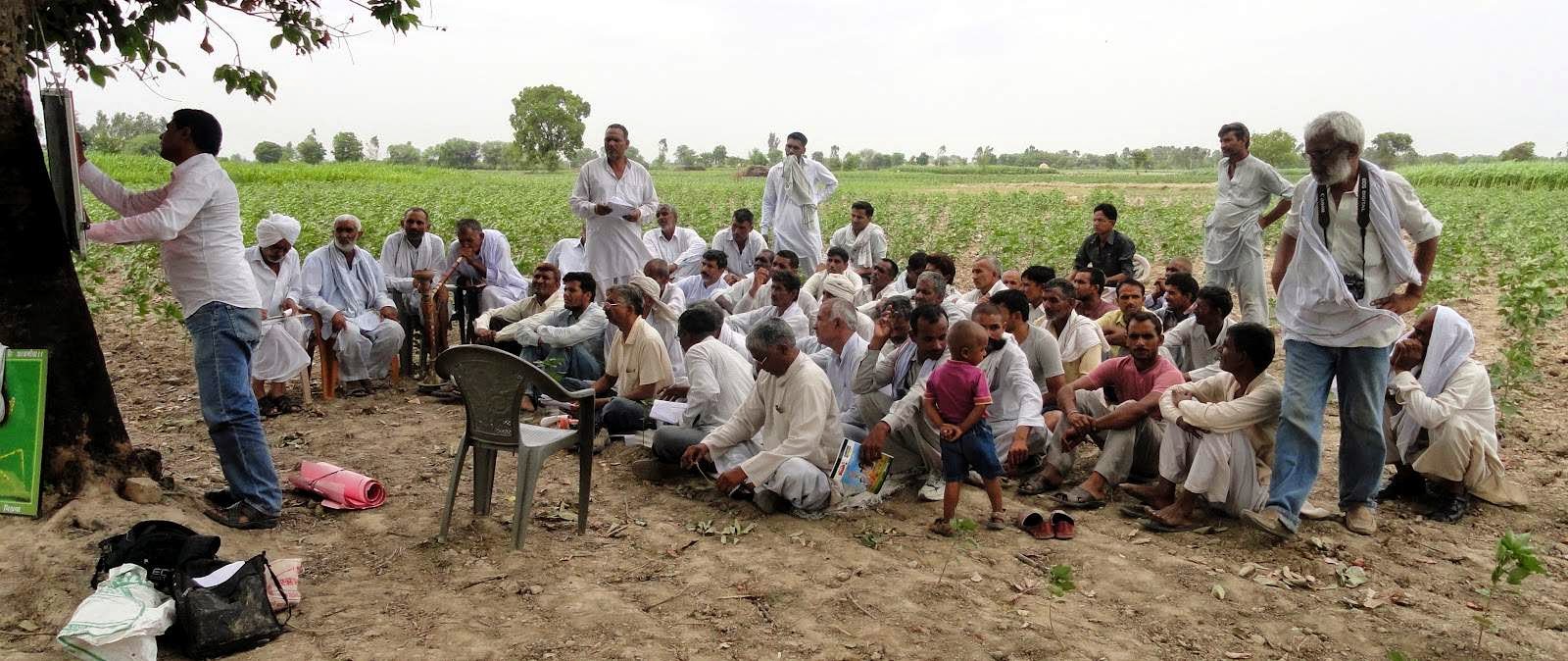Occupying much of south-central India, the Deccan Plateau represents a large swath of the country’s agricultural terrain. The region is home to three states, the major population centers of Bangalore and Hyderabad, and land used to cultivate many traditional crops, including sugar, maize, and sorghum. However, a growing number of peasant women, many organized within the Deccan Development Society (DDS), have taken the initiative to farm through unique, sustainable techniques that harken back generations. The implementation of diverse crops and organic growing methods devoid of chemicals and pesticides have resulted in the creation of a network and model through to feed families and communities successfully and improve livelihoods.
Planting a diversity of crops, these women farmers avoid many physical and mental heath problems found in large-scale Indian farming, and are able to feed their families effectively. According to the DDS, farmers who suffer from poor harvests often battle depression and suicide, and the successes realized by biodiverse planting alleviates many of these concerns. Many of the women plant more than 20 different crops on their land, ignoring scientists and economists that argue against cultivating crops that do not typically command high prices in the open market. In his profile on the region, P.V. Saathesh, a founder and the General Secretary of the DDS, cites the example of yellow sorghum, which is not a big money crop, is both nutritious and very resilient, growing in dry soil and sub-optimal conditions.
Deccan peasant women represent empowerment, tradition, and the strength that accompanies responsible living. With the ability to grow many different crops, these women can preserve their heritage by planting and cultivating foods that, while nutritious and delicious, are not typically grown on a modern industrial scale. Saathesh cites this type of “farm to table” agriculture as a simple yet powerful way to connect families, maintain aged and treasured cultural aspects, and live under a fairly low-income umbrella. Biodiverse farming allows women to build seed collections to be envied that support entire communities. Since 1998, annual Mobile Biodiversity Festivals attract over 150,000 farmers in the region, and the Indian National Biodiversity Board has labeled the area as an Agricultural Biodiversity Heritage Site. Encouraged by this recognition of their work, the women are measurably content with their results; a peasant woman named Mahbatpur Swaroopa noted that the farmers “…are totally disinterested in any monetary benefits. It is the recognition that (they) cherish.” The successes of their seed collections and biodiverse planting schemes have earned them respect from their husbands, appreciation from their families, and recognition from national organizations applauding their efforts.
Biodiversity has helped women peasant farmers in the Deccan Plateau of India construct positive, sustainable lives for their families, futures for their children, and empowerment for generations of Indian women to come. The DDS notes that by avoiding health problems that typically beset commercial farmers dependent on cash crops and chemical enhancements, the Deccan women can produce nutritious, cost-effective foods that are resistant to climate variations, adverse growing conditions, and provide lasting, measurable results for their communities.
